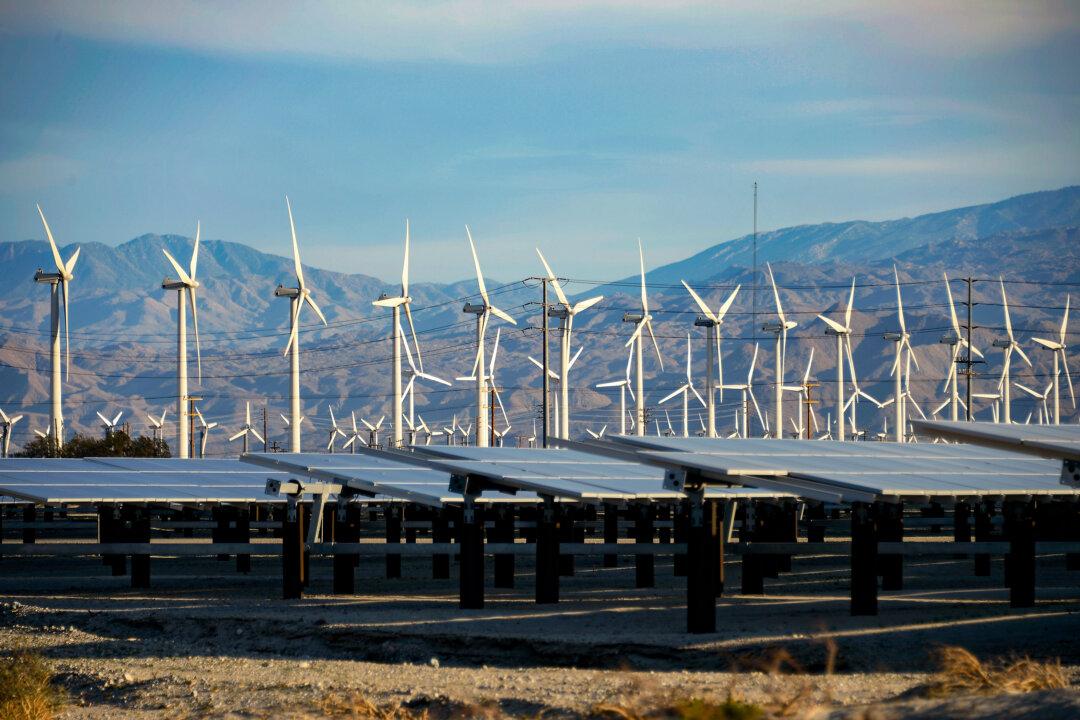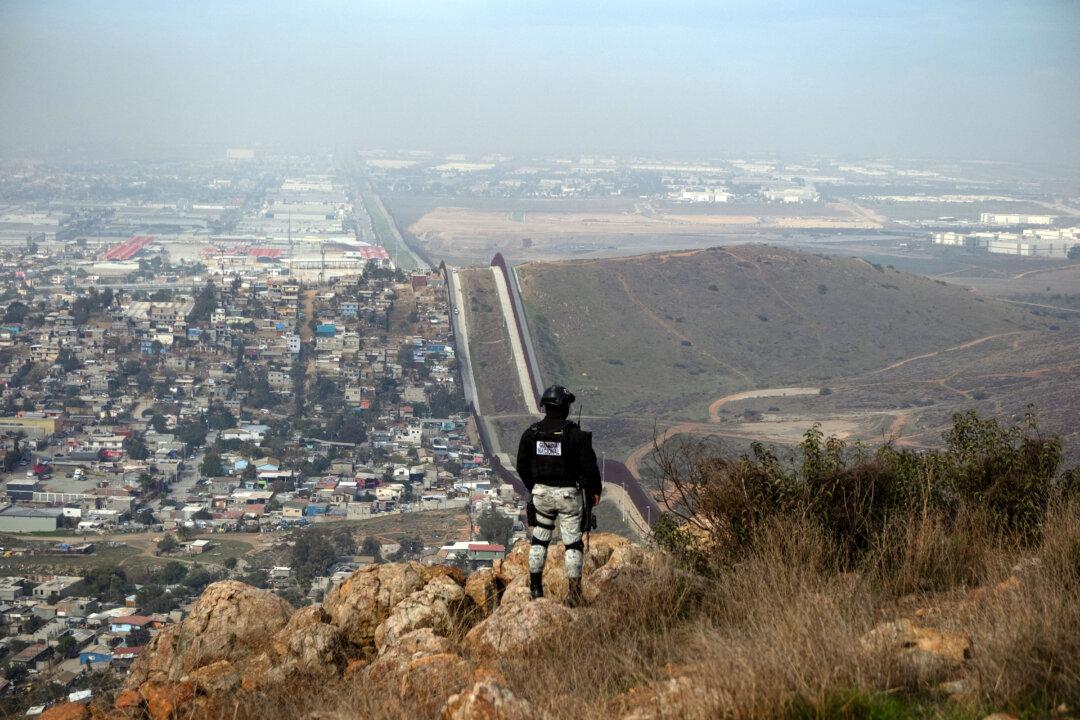Electricity is among the most essential sources of America’s unparalleled prosperity and productivity; it is also the greatest vulnerability.
The United States has become so utterly dependent upon an uninterrupted supply of affordable electricity that, as our grid becomes ever more fragile, American society has become fragile along with it.
Former CIA director James Woolsey testified before the U.S. Senate in 2015 that, if America’s electric grid were to go down for an extended period, such as one year, “there are essentially two estimates on how many people would die from hunger, from starvation, from lack of water, and from social disruption.
Chris Keefer, president of Canadians for Nuclear Energy, concurred.
“The energy grid is a civilizational life support system, and without it, modern society collapses very quickly,” he said.
Mr. Keefer is one of the experts featured in energy analyst, author, and documentarian Robert Bryce’s new film, “Juice: Power, Politics and the Grid.” This five-part docuseries looks at how and why America is now “fragilizing” and destabilizing the engineering marvel that is the central pillar of our society.
“We are seeing the grid’s reliability, resilience, and affordability all declining,” Mr. Bryce told The Epoch Times. “We wanted to get people and policy makers to understand that our most important energy network is being fragilized, and we ignore this danger at our peril.”
He has been fixated on America’s electric grid for decades and authored the 2020 book “A Question of Power,” one of the more comprehensive studies of how electricity grids work and why they may not work as well in the coming years.
Steven Pinker, author and Harvard psychology professor, wrote in a review of the book that “energy is our primary defense against poverty, disorder, hunger, and death.”
And yet, many nations in the West have engaged in a game of Russian roulette with their power grids, in an attempt to reduce global temperatures.
A ‘Dire Warning’
The warnings don’t just come from the analysts featured in the documentary; electricity regulators are becoming more vocal in sounding the alarm as well.It was the near-collapse of Texas’s power grid during winter storm Yuri in 2021 that compelled Mr. Bryce to make the documentary. He partnered with film director Tyson Culver, who along with Mr. Bryce, experienced the crisis first-hand while living in Austin.
“I didn’t plan to make another documentary after we made our first film that we released in 2019,” he said. “I just thought, ‘I can’t do this; it costs too much and takes too long.’
“But then we learned that the [Texas] grid nearly failed, and if it had failed, tens of thousands of people would have died,” he said. “And we realized, if this could happen in Texas, the energy capital of the world, then the electric grid is really being undermined.”
The Fatal Trifecta
The destabilization of the power grid is the result of what analyst and author Meredith Angwin deems the “fatal trifecta.”“The Texas grid almost collapsed because of what I call the fatal trifecta,” Ms. Angwin states. “The first part of the fatal trifecta is over reliance on renewables, which go on and off when they want to.
“The second part is over reliance on natural gas, which is delivered just in time and can be interrupted just in time,” she says. “And the third part is relying on a neighbor to help.”
All of these factors came into play during Texas winter storm Yuri in 2021. Wind and solar facilities were unable to deliver in freezing weather, and supplies of natural gas were interrupted by freezing temperatures as well, just as people needed electricity to heat their homes.
While Texas missed having a months-long outage of its electric grid by only a matter of minutes, the damage from short-term outages was severe.
The third leg of the “fatal trifecta” is the ability of regions of the grid to support each other.
For all its fragmented sources, utilities, and regulations, the North American power grid is interconnected in a way that allows one region to shift electricity to another region if one has an excess and the other a shortfall. Utilities routinely rely on this to balance supply and demand at any given moment.
Following Europe and California
In many ways, Texas followed the lead of Europe and California in transitioning their grid to wind and solar energy, retiring coal plants and sometimes nuclear plants as well, to halt global warming and please anti-nuclear activists. Because wind and solar are weather-dependent, a dispatchable backup source is needed, and that source is typically natural gas.As Europe, California, and Texas have learned, this transition creates vulnerability compared to coal and nuclear plants, where fuel can be stored on-site. It has also led to sharply increasing prices for electricity, as dual systems of power generation need to be built, along with additional transmission infrastructure.
In what appears to be a surrender, or at least a retreat, from the net-zero transition, some European countries, like Germany, are restarting their coal plants as wind and solar fail to meet demand, even at inflated prices.
“What we see in Europe from this misguided infatuation with renewables is a stark warning, and I think we can see the same thing in California—skyrocketing electricity prices and no significant reduction in CO2 to speak of,” Mr. Bryce said.
At the same time, the drive to achieve net-zero CO2 emissions has led to political and corporate campaigns to shift ever more products onto the electric grid. This includes such essentials as home heating, transportation, and cooking.
Laws and regulations in Europe and the United States have sought to ban or phase out oil and gas heating in homes, along with gasoline-powered cars, trucks, and buses. The effect of this will be to make people more dependent on electricity while pushing up demand to levels that many say the grid cannot meet.
“The grid is already cracking under existing demand,” Mr. Bryce said. “We’re seeing the grid’s reliability, resilience, and affordability all declining, while these pressure groups are trying to put yet more demand on it.
Wind and Solar Devour Open Spaces
Added to this is the insatiable hunger of the wind and solar industry for the consumption of land.Many energy experts and environmentalists are coming to the conclusion that nuclear energy is the best choice to generate reliable, affordable energy, while cutting CO2 emissions. Despite headline nuclear catastrophes at plants in Chernobyl, Three Mile Island, and Fukushima, many countries are building new plants or delaying closures of existing nuclear plants, considering it the cleanest and least environmentally harmful source of electricity.
In addition to a smaller footprint, nuclear power stations also typically do not require the construction of thousands of miles of new transmission lines to reach remote locations, where wind and solar facilities are typically built.
Climate Activists Embrace Nuclear
Even ardent supporters of green-new-deal initiatives are starting to accept that nuclear must be at least part of the plan.“What we’re seeing out of Congress, and to some extent out of this White House, is more accommodation for nuclear energy,” Mr. Bryce said.
Bulgaria, the Czech Republic, the Netherlands, and Poland are also preparing to build new nuclear reactors, the report states, while other European nations—Austria, Denmark, Germany, Luxembourg, and Portugal—remain opposed to nuclear power.
“If we are going to agree that climate change is an issue, with more [weather] extremes for longer, it’s total insanity to make our most important energy network dependent on the weather,” Mr. Bryce said. “We need weather-resilient, weather-resistant generation, not weather-dependent generation.”
“With the Inflation Reduction Act and the investment tax credits, production tax credits, all of the financial incentives in the power-gen sector are to build more wind and solar,” he said. “To me, that is just absolute crazy town.”







